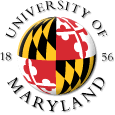Presentation #3. Equations & Graphs
In a technical presentation, we often rely on equations and graphs to help advance our story. Pick a topic where at least one of the slides contains an equation and you explain the equation to the audience. You should define and explain the symbols. What is important in presenting an equation is not to read the equation but to convey what the equation means, what each term means, compare/contrast different terms, importance/magnitude of different terms, how each variable in the equation relates to other variables, how the equation is applied (possibly with examples), and how to solve it (if the solution is not obvious). Always tell a story, and equations are only a part of the visual aid and help tell your story, not the other way around. There are many technical examples: reaction rate expression, Michaelis-Menten enzyme kinetics, reactor design equations, heat transfer equations, distillation equations, Laplace transforms, Navier-Stokes equation, Boltzmann distribution, Schrodinger equation, equations for predicting the upcoming March madness...
Likewise, at least one of the slides should contain a graph and
you use the graph to advance/support your story. The graph
itself is perhaps a supporting part of the story, but usually not
the main story. We sometimes let the graph drive the story by
focusing on explaining what the graph means, but always return
back to the main story. Use different graphs to emphasize
different points: a pie chart to emphasize how the whole
comprises different parts, a bar graph to show the
effect/magnitude of different causes, a line graph to show the
general trend, a 3D surface plot to show the maximum/minimum
location, a heat map to show the distribution and hot spots, etc.
Do not forget to label axis and associate numbers with physical
units.
Presentation #4. Contemporary Chemical Engineering Topics
Oral Presentation Evaluation
Return to Prof. Nam Sun Wang's Home Page
Return to Chemical Engineering Seminar (CHBE333)
Chemical Engineering Seminar -- Syllabus
Forward comments to:
![]() e-mail: nsw@umd.edu
©2024 by Nam Sun Wang
e-mail: nsw@umd.edu
©2024 by Nam Sun Wang
